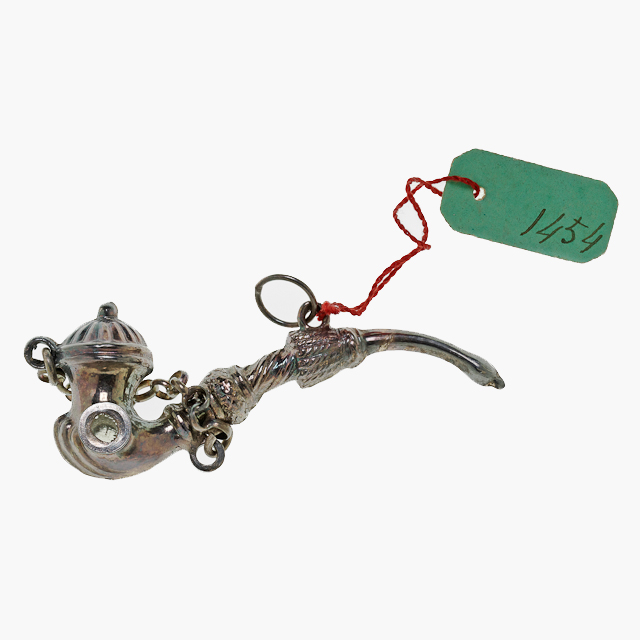Stanhope Peep Pipe, France

Transferred from the Wellcome Institute in 1985; 1985.52.756
Stanhope Peeps were popular novelty items with travellers and tourists in the 19th and early 20th centuries. Made in a variety of guises, from smoking pipes to pens, knives, perfume bottles and crucifixes, each Stanhope Peep contains a tiny lens or peep hole through which, when held to the light, a miniature photographic image can be seen.
The Stanhope lens was invented by the British scientist and politician Lord Charles Stanhope (1753–1816), but it was a Frenchman named René Dagron (1819–1900) who developed the microphotographic lens and commercialised the Stanhope Peep. In 1862, Dagron established a small factory to make Stanhope Peeps, which he sold in Europe and America.
This miniature smoking pipe contains the text ‘SOUVENIR DE LONGPONT’ and an image of the 13th century Gothic abbey church at Longpont-sur-Orge, a place of pilgrimage in France. Other photographs in Stanhope Peeps include portraits of famous people and tourist attractions such as Niagara Falls and the Eiffel Tower.






